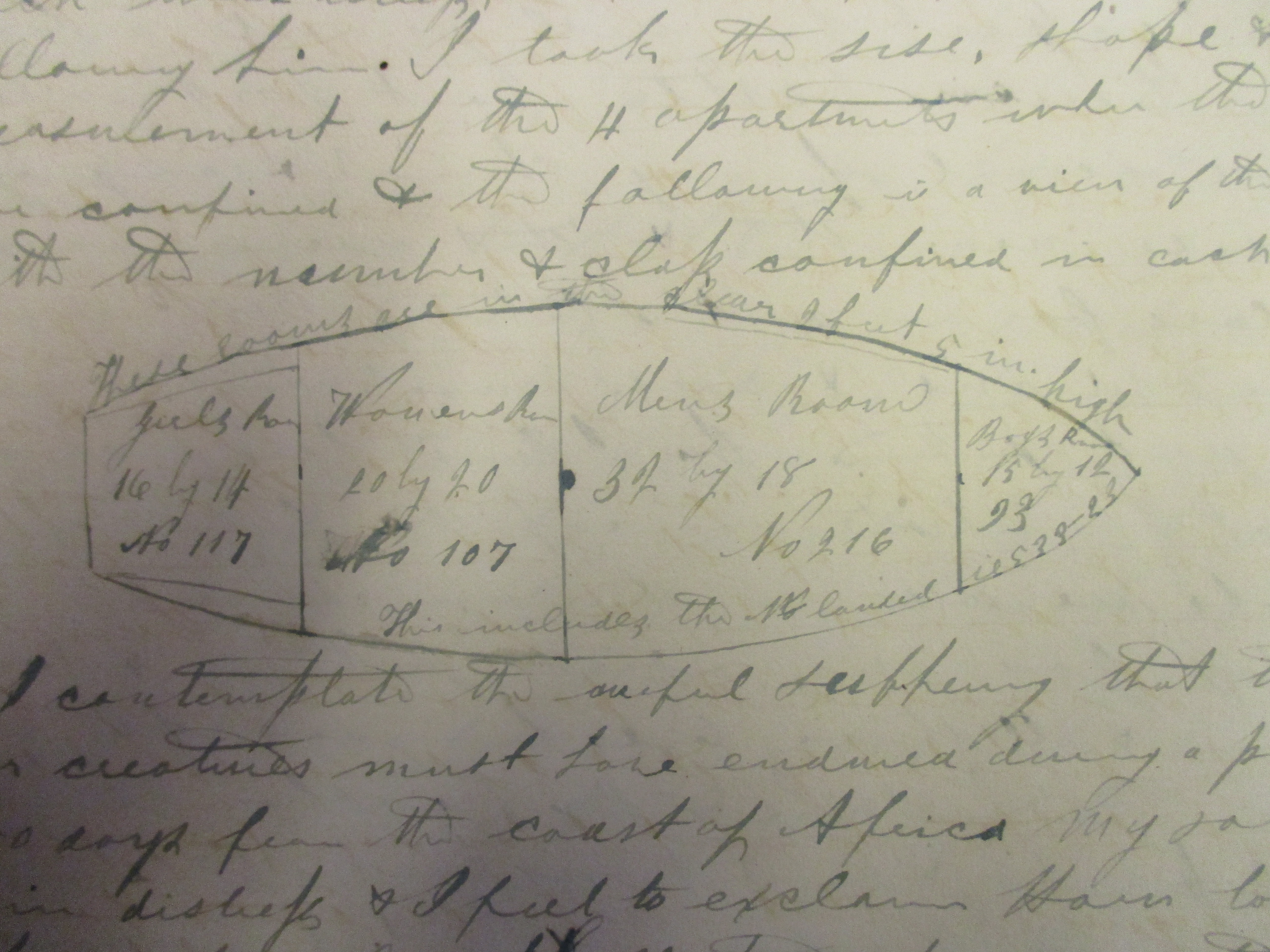Slavery and Sanctification
Christopher Momany of Adrian College tells of an exciting recent historical discovery with sobering implications.

Saturday, May 23, 1840 – Missionary to Jamaica David Stedman Ingraham is battling a serious lung disease, one that would end his life the next year. The Oberlin Collegiate Institute alum notes his health struggle, then writes in his journal:
“But have had some joy in reading & meditating on the word of God. Have also read one of Prof. Finney’s lectures on Sanctification [from The Oberlin Evangelist]. I see the subject plainer & plainer & see that nothing but unbelief hinders me from the enjoyment of this great & glorious privilege.”
A sense of urgency and vocation dominate this personal record, and until a little over one month ago, we did not know that the document existed. Near the beginning of November, the alumni director at Adrian College in Michigan set about to reorganize a storage area and found a nondescript cardboard box. Among the relatively mundane contents was an old, old document – some kind of diary or journal. A weathered bookplate indicated that the artifact once sat on the shelves of Adrian College’s library, but there is no current record of it among the College collection or among the archives.
The document measures 7 ¾” X 11” and contains 100 pages of writing. It begins on July 14, 1839 and ends on March 14, 1841. Because the text mentions a connection with Oberlin College, we wondered if this was an early journal of Adrian College’s founding president, Asa Mahan. Mahan is best known for his time at Oberlin (1835-1850), but he came to Michigan and established our institution in 1859.
However, our find also contained references to Jamaica and mission work there following the implementation of British emancipation policies. There is a well-established link between Oberlin and Jamaican missions. Gale L. Kenny’s book, Contentious Liberties (2010), tells much of the story. Yet identifying the author of our artifact was no easy task. Many Oberlin-related people were part of the Jamaican enterprise.
Some serious sleuthing has led us to conclude that the journal in question is the personal record of Rev. David Stedman Ingraham, often considered the founder of Oberlin’s mission to Jamaica. And we do not make this claim lightly.
First, the journal entries match well with the published letters of Theodore Weld, Angelina Grimke, and Sarah Grimke. On June 12, 1840 the journal writer speaks of being back in the United States visiting the Weld/Grimke home, Belleville, New Jersey. On June 18, 1840 Weld wrote abolitionists Gerrit and Anne Smith that “a beloved brother, Rev. D. S. Ingraham, one of the ‘Lane Rebels’ – now a missionary to the emancipated slaves in Jamaica” was visiting his Belleville home. Then there is the fact that Ingraham married Oberlin student Elizabeth Hartson in the later 1830s. Hartson is listed in official Oberlin record as Betsey Hartson. The journal writer speaks of traveling west from New Jersey during late June 1840. While visiting friends in New York State, the writer recalls being there a few years earlier with “my dear Betsey.”
Moreover, the writer tells of visiting “dear Uncle George’s” and “dear Uncle Aaron Stedman” while in New York State. George and Aaron Stedman were uncles of Rev. David “Stedman” Ingraham. Finally, the writer continued west during the summer of 1840 and wrote from “home” in Wayne, Michigan on July 27. David Ingraham is listed among Oberlin College records as hailing from Wayne (or Nankin), Michigan. His parents are buried among a graveyard in present-day Livonia, Michigan. David Stedman Ingraham died from lung disease (probably tuberculosis) on a return trip to the United States in 1841. Death came while staying at the Weld/Grimke home one year following his earlier visit to Belleville, New Jersey.
The Ingraham journal is filled with personal observations regarding matters of faith and reflects the intellectual and spiritual teaching of Oberlin’s Charles G. Finney and Asa Mahan. However the document also contains arresting witness around social issues. The twenty-second page of this journal speaks with pain and power. Before his trip home, on Christmas day 1839, Rev. Ingraham went down to the harbor at Port Royal, Jamaica and inspected a recently impounded “slave brig,” the Ulysses. He documented the way 556 people were abused over the course of a fifty day voyage, and he created a diagram of the ship that is stunning in graphic detail. The journal entry for that day exclaims: “It seems as if the church were asleep,” and Ingraham asks a familiar eschatological question: “How long, O Lord?”
A quest for sanctification and social justice are so inextricably bound throughout this text that it is impossible to disentangle the two. In Ingraham’s case, the urgency was accentuated by poor health and intimations of impending death. David Stedman Ingraham died before his thirtieth birthday. For those who continue to explore and debate issues related to Christian perfection, as well as social justice – even modern-day slavery – the question remains: “How long, O Lord?”
Rev. Dr. Chris Momany is the chaplain and a member of the Department of Philosophy/Religion at Adrian College. He is a graduate of Adrian College, Princeton Theological Seminary, and Drew University. His writing appears in both academic and more accessible publications. Dr. Momany's current research explores the relationship between antebellum moral philosophy and the antislavery movement. He is also a leader in the contemporary movement to fight human trafficking or "modern-day" slavery.
Read more about Christians fighting slavery in issue 53 on William Wilberforce and issue 62 on African-American religion; and about Finney in issue 20.



